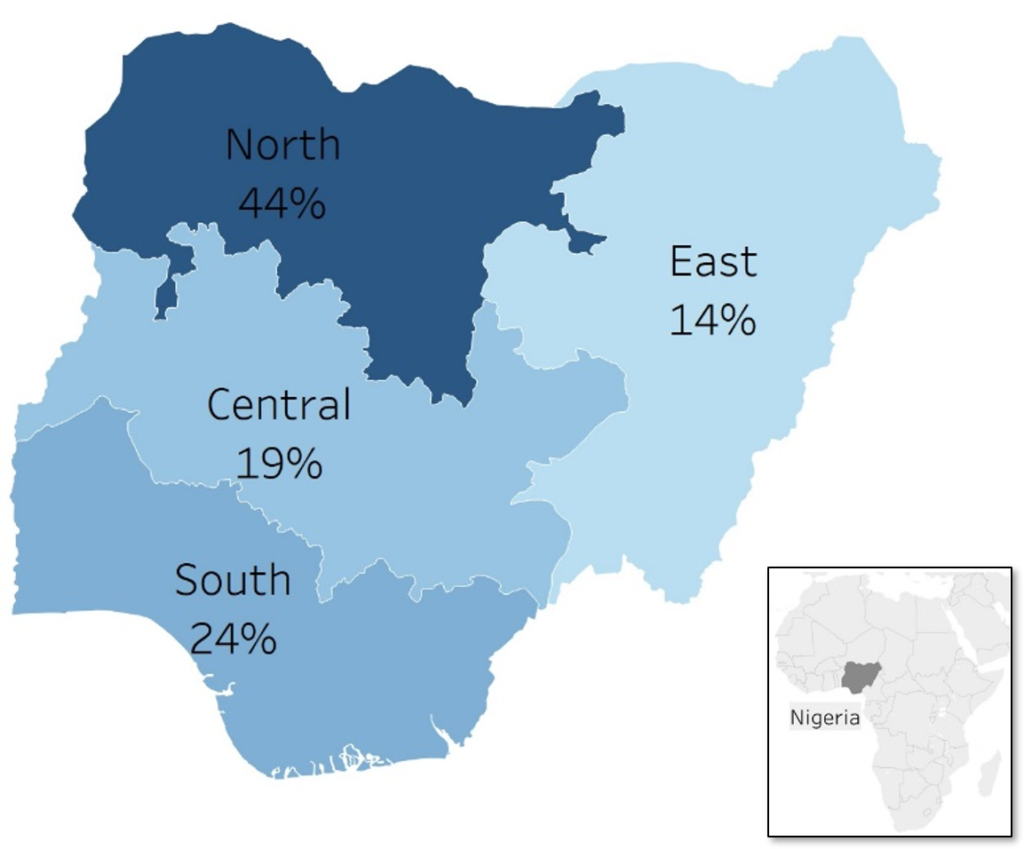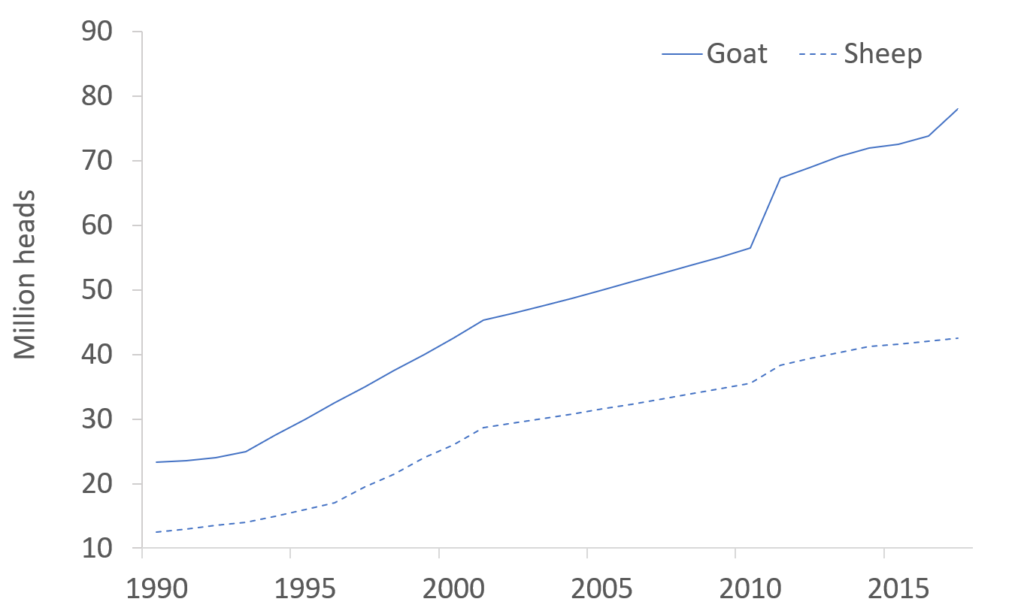Small ruminant production in Nigeria
Small ruminants (goats and sheep) are mainly produced by smallholder farmers in low input, low yielding systems.
Industry snapshot:
- Nigeria has the largest small ruminant herd in Africa – followed by Sudan, Chad, Ethiopia and Kenya.
- There are 73.8 million goats and 42.1 million sheep – mainly indigenous breeds.
- Small ruminants are kept by smallholder farmers for meat, hides, wool and, to a lesser extent, milk.
- Small ruminant population is concentrated in the North of Nigeria.
- Gross production value of goat and sheep meat in 2016 was US $373.1 and $73.4 million, respectively.
Small ruminant population by geographic zone (NASS 2011)
Nigeria’s small ruminant population
Most small ruminants in Nigeria are indigenous breeds used for meat, hides and savings.
Small ruminant production systems
- Small ruminants are largely kept by pastoralists & agro-pastoralists in the central and northern parts of Nigeria.
- Goats and sheep mainly graze on communal natural pastures and crop residues.
- A small number of farmers practice semi-intensive and intensive systems.
Value chains & market systems
Small ruminant meat and milk value chains are poorly developed.
- About 13 million producers work in the small ruminant value chain.
- Many actors work beyond farmgate in the livestock (goat, sheep, cattle, and pigs) value chain. There are about 388,000 butchers and grillers, 740,000 traders, 59,000 service providers and 12 milk processors.
- The majority of farmers are isolated from the end market (consumers) and have limited control over input costs and product movement to the market.
- Farmers have limited access to market related information (i.e., price, value chain competitors, and consumer preferences).
- Farmers have limited understanding of processors requirement and lack of quality control instruments.
- Farmers lack of business management skills (e.g., production planning and meeting sanitary standards).
National small ruminant population (FAOstat)
Meat and milk yields
- Carcass weight per slaughtered goat and sheep is 15.1 and 12.1 kg, respectively.
- Goat milk yields are 0.5-0.6 l/goat/day; this can increase to 0.8-1.0 l/goat/day with improved feeding.
- Both meat and milk yield are influenced by breed, quality of feed, animal health and farm management.
Issues affecting production
- Seasonal feed shortages (natural grasses, crop residues).
- Limited access to veterinary services.
- Genetic potential of small ruminant breeds currently used.
- Suboptimal farm management.
- Diseases that cause mortality or affect reproduction.
Opportunities for small ruminants
- Current and estimated future meat supply does not meet growing demand.
- Demand of both mutton and goat meat is estimated to increase by 216% while supply is estimated to increase by 159% by 2050 (FAO 2018).
- Population growth, increasing income, and change in consumer taste are likely to drive demand rise of high-quality meat products.
References:
- FAOstat: www.fao.org/faostat
- NASS (2011). National Bureau of Statistics/Federal Ministry of Agriculture and Rural Development Collaborative Survey on National Agriculture Sample Survey (NASS), 2010/2011
Download our small ruminant production in Nigeria fact sheet here.
Header photo credit: Goat in a market in Nigeria by ILRI/Mann is licensed under CC by 2.0. No changes were made to the image.


